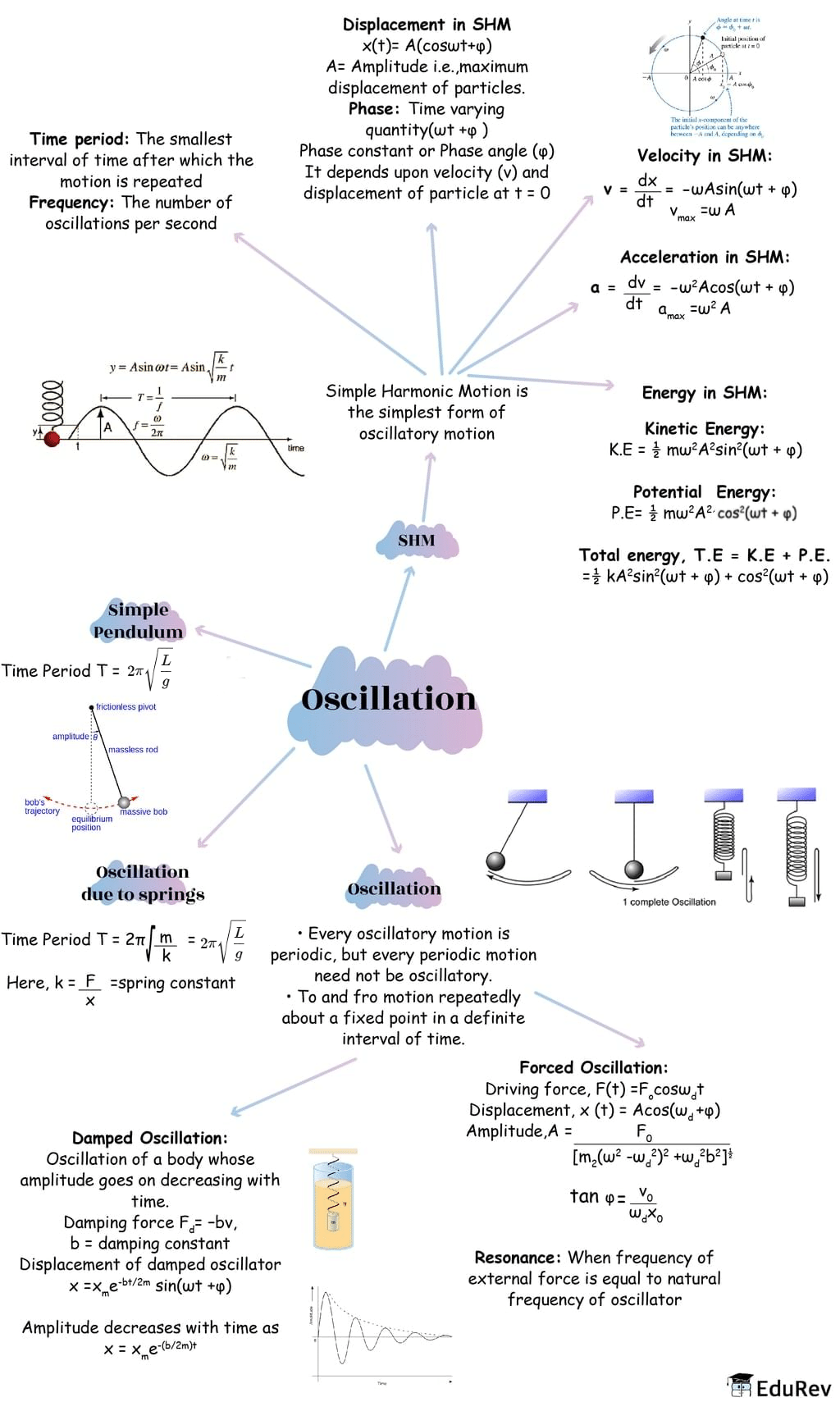NEET Exam > NEET Notes > Physics Class 11 > Mind Map: Oscillation
Mind Map: Oscillation | Physics Class 11 - NEET PDF Download

The document Mind Map: Oscillation | Physics Class 11 - NEET is a part of the NEET Course Physics Class 11.
All you need of NEET at this link: NEET
|
95 videos|367 docs|98 tests
|
FAQs on Mind Map: Oscillation - Physics Class 11 - NEET
| 1. What is oscillation and how does it occur in physics? |  |
Ans. Oscillation refers to the repetitive variation in a system about a central point or equilibrium position. In physics, it occurs when an object, such as a pendulum or a mass on a spring, moves back and forth due to a restoring force that acts against its displacement from the equilibrium position. This motion can be described using parameters such as amplitude, frequency, and period.
| 2. What are the different types of oscillations? |  |
Ans. There are two main types of oscillations: simple harmonic motion (SHM) and damped oscillation. SHM occurs when the restoring force is directly proportional to the displacement and acts in the opposite direction, resulting in a sinusoidal motion. Damped oscillation occurs when the amplitude of the oscillation decreases over time due to external forces, such as friction or air resistance.
| 3. What is the significance of frequency and amplitude in oscillations? |  |
Ans. Frequency refers to the number of complete cycles of oscillation that occur in a unit of time, typically measured in hertz (Hz). Amplitude is the maximum displacement of the oscillating object from its equilibrium position. Together, these parameters determine the characteristics of the oscillation; for example, higher frequency indicates faster oscillations, while greater amplitude signifies larger movements from the rest position.
| 4. How do oscillations relate to waves? |  |
Ans. Oscillations and waves are closely related concepts in physics. An oscillation refers to the motion of a single point in a medium, while a wave is the transfer of energy through a medium caused by oscillations of particles. For example, sound waves are created by the oscillation of air particles, and these oscillations propagate through the medium, resulting in the transmission of sound.
| 5. Can oscillations be found in everyday life? If so, what are some examples? |  |
Ans. Yes, oscillations are prevalent in everyday life. Examples include the swinging of a swing set, the vibrations of a guitar string when plucked, the motion of a clock pendulum, and the oscillation of a tuning fork. Each of these examples involves a repetitive motion that can be described in terms of frequency, amplitude, and other oscillatory characteristics.
Related Searches






















